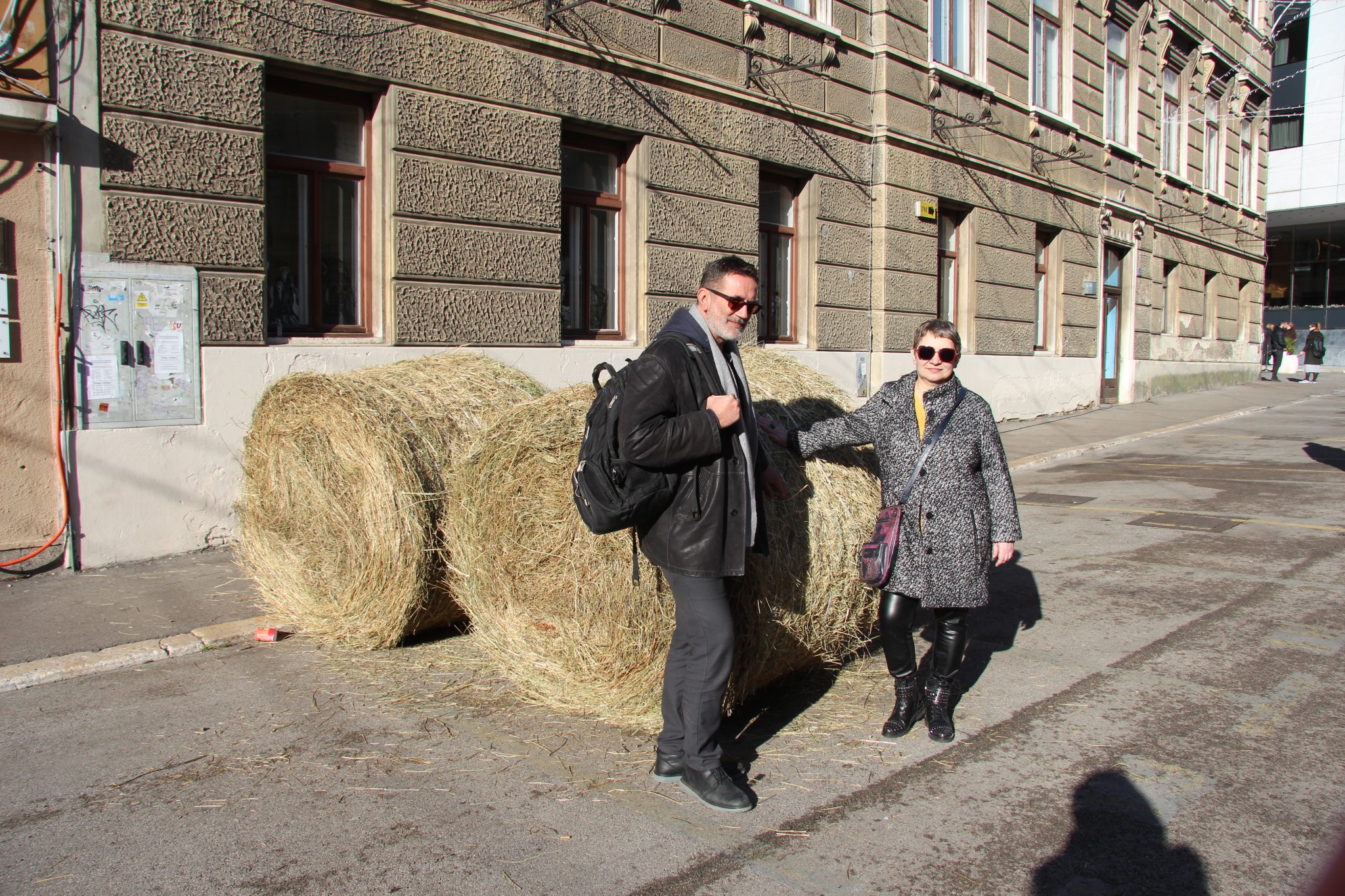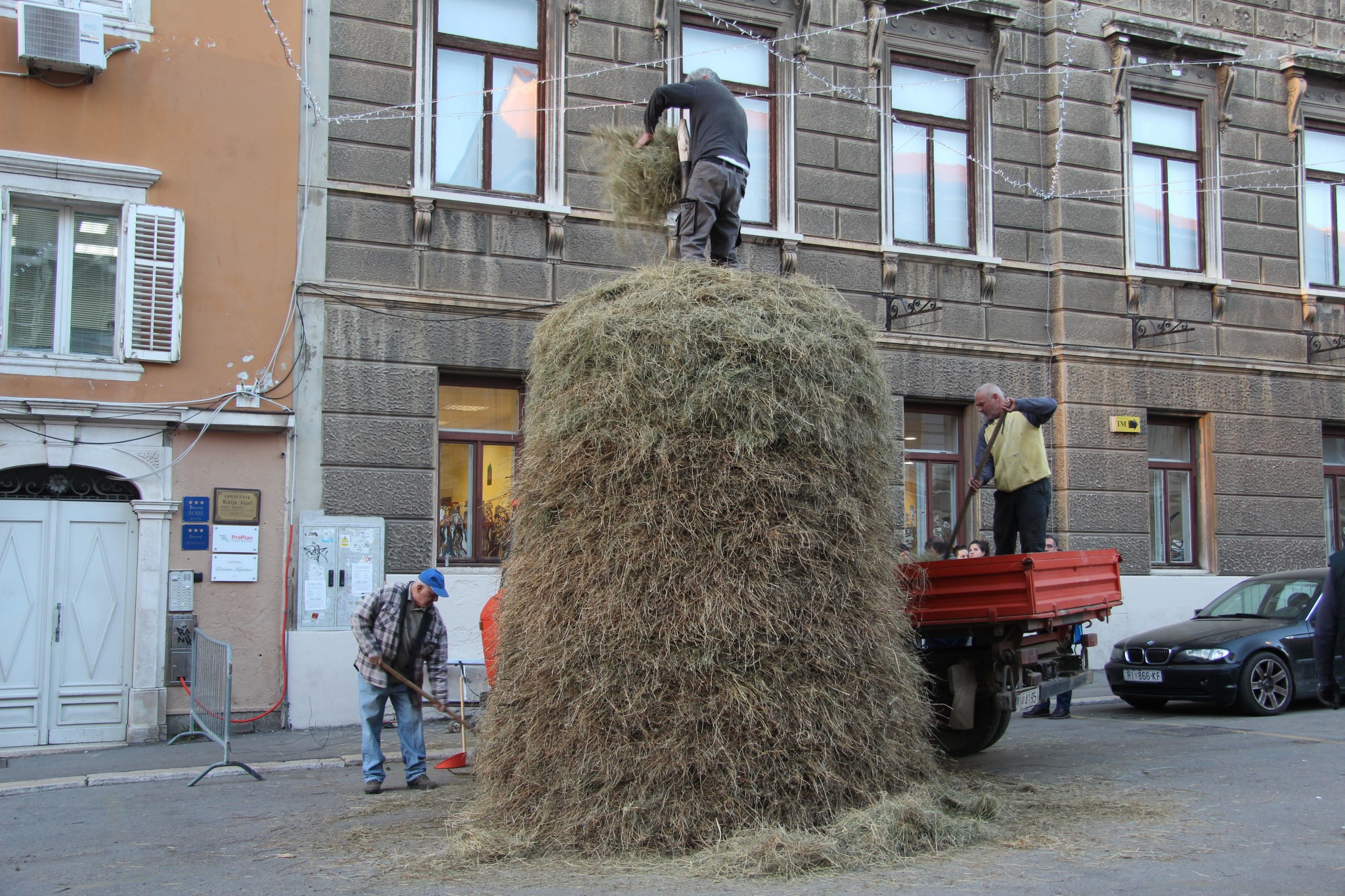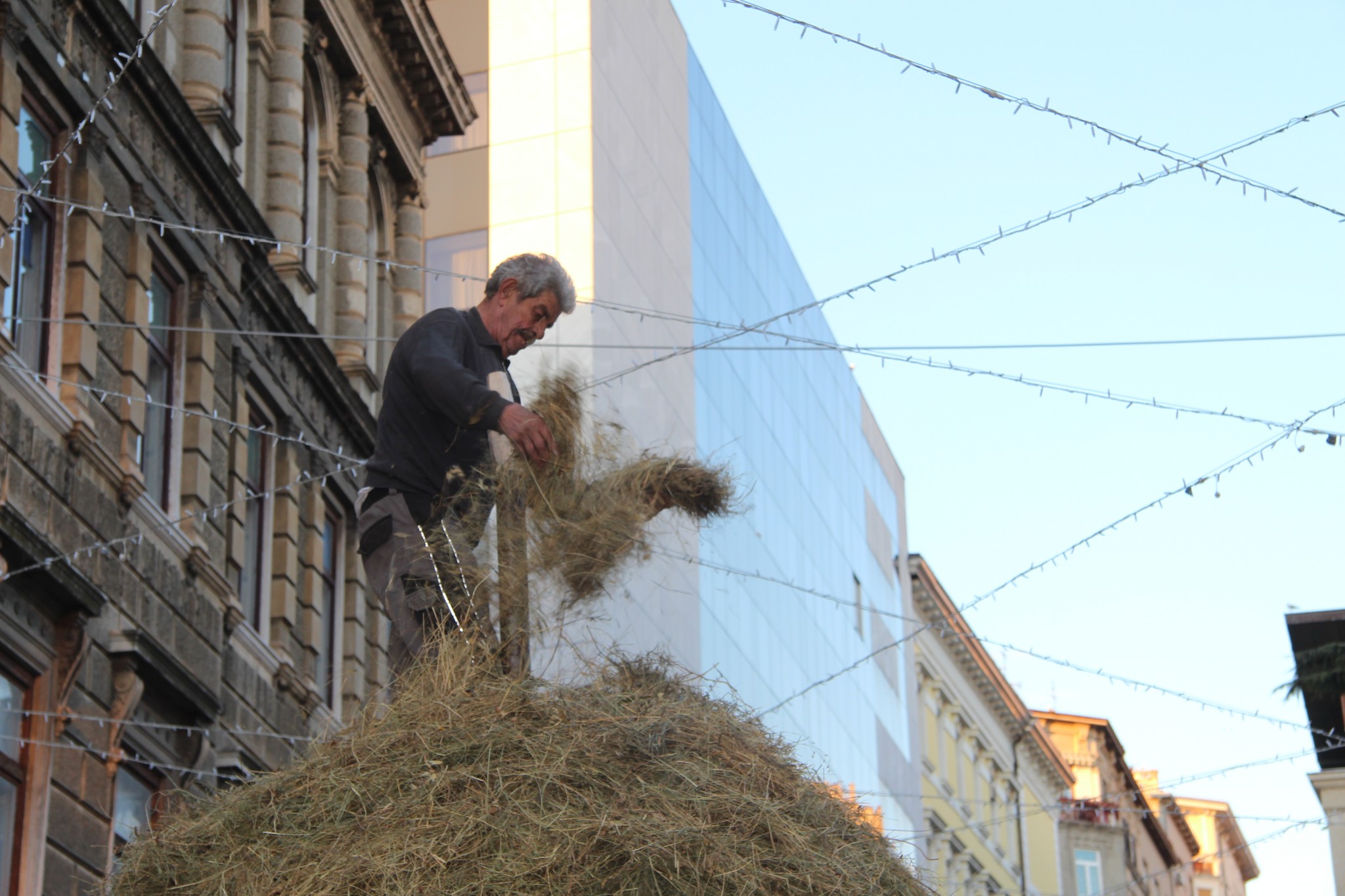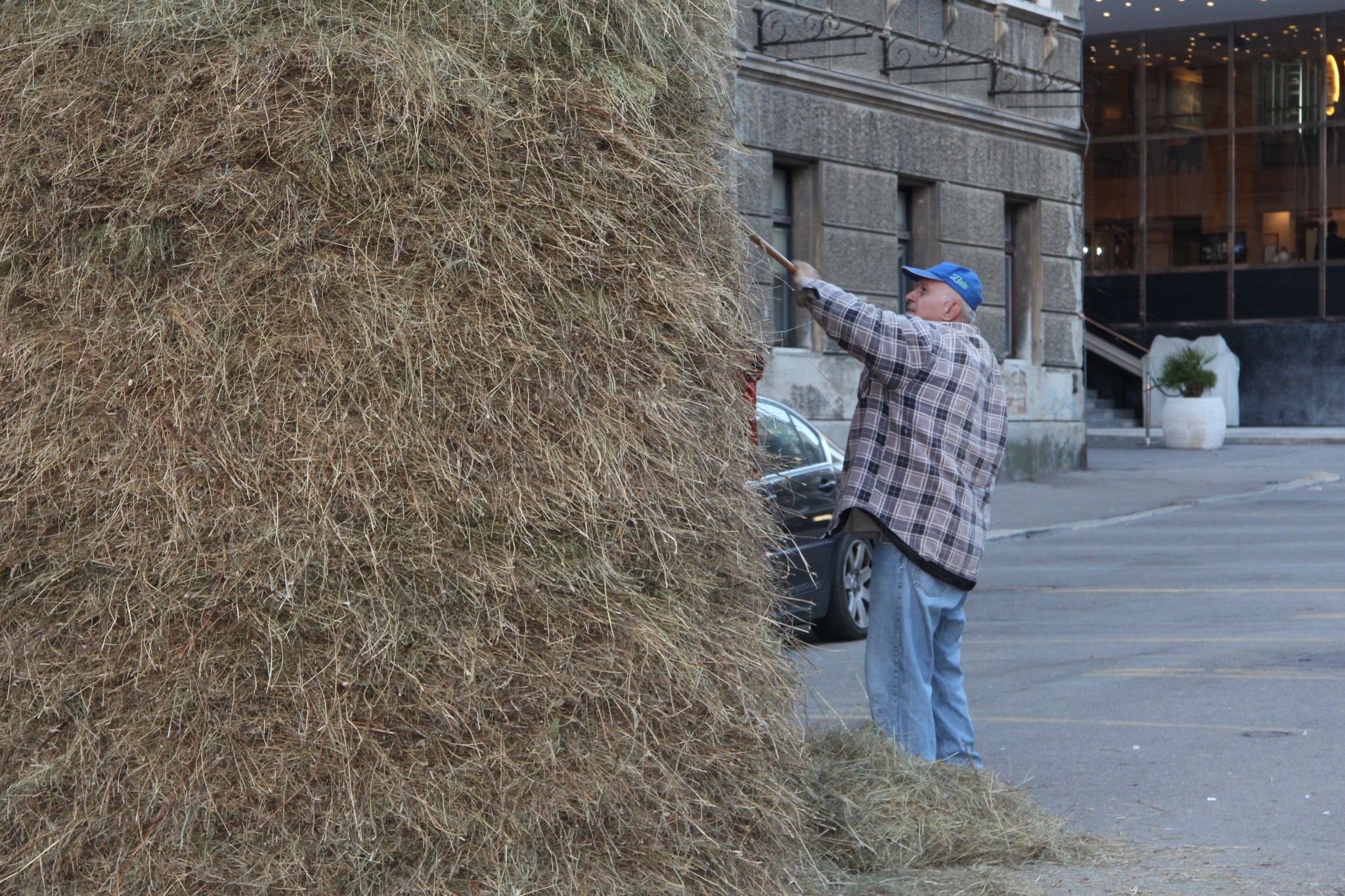This temporary sculpture will remain on display in the Square of the 128th Brigade of the Croatian Army from 8 January to 3 February.
A temporary hay sculpture entitled “The Haystack” by academician Ivan Kožarić, one of Croatia’s most renowned sculptors, was installed in the Square of the 128th Brigade of the Croatian Army. Until the beginning of February, it will be symbolically marking the beginning of the harvest of cultural events in Rijeka’s year as the European Capital of Culture. The installation of the sculpture was organised by the Museum of Modern and Contemporary Art, with the support of the Kožarić family and Komunalno društvo Čistoća, as part of the European Capital of Culture’s Times of Power flagship.

The work of art was announced as the first in a series of art installations in the public space under the Pocket Turned Out project, implemented by artists and curators who aim to transform and personalize urban areas by integrating art into the everyday routine, with an added emphasis on the issues of hospitality and tolerance.
Displaced from its natural environment and usual gathering season, hay stacked around a central pole appears as an astonishing totem in the public space, as a hint of rurality alongside the main symbol of urbanity – Rijeka’s Korzo.

Still, Rijeka is not the first city to host Kožarić’s “Haystack”.
“The sculpture was first installed in Dubrovnik in 1996 in front of the Rector’s Palace, and once again in 2001, and then in 2005 in the Art Pavilion in Zagreb. The sculpture, with its unusual choice of material and being installed in urban areas, never failed to elicit reactions from the citizens”
, explained Barbara Kožarić Pajić, the grandniece of Ivan Kožarić. Due to his advanced age (99), the academician was unable to attend the installation of the sculpture, but according to the words of Barbara Kožarić Pajić, he is very pleased that his sculpture was installed in Rijeka.
Hay is a material that has been used for years to help people survive the winter, and this displacement from its natural environment into urban areas where it arguably does not belong is bound to spark interest among our citizens. When it comes to the meaning of the sculpture, it is subject to the interpretation of each individual beholder.

“If we are interested in meaning in its broadest sense, the fact that Kožarić has always valued the concepts of place and time in his works needs to be taken into account. And the moment of this artistic placement in Rijeka, happening just days shy of the European Capital of Culture project opening ceremony, symbolically marks the beginning of the harvest of culture events ahead of us in 2020”
, Kora Girin, Curator of the Museum of Modern and Contemporary Art pointed out.
If people are intrigued by it, the sculpture will fulfil its purpose. Devoid of any controversies and political connotations, it does manage to spark interest among our citizens, eliciting their reactions in an attempt to come up with their own interpretations of its meaning. In this period of the carnival, immediately following the advent season, in midwinter, Kožarić introduces the texture and smell of hay into the public space, its decaying and transient nature confirming his unmistakable sense of space and the play of city points and symbols.

The minimalism and conciseness of expression coupled with the unassuming material and simple form is Kožarić’s longstanding recipe for conveying a visual and multi-layered artistic message in its full glory. Since the reactions of passers-by form an integral part of Kožarić’s work, it remains to be seen how the people of Rijeka will accept this unusual guest that is to stay in the city until 3rd February of this year.

Ivan Kožarić (Petrinja, 10 June 1921) graduated in 1949 from the Academy of Fine Arts in Zagreb, where he worked as a freelance artist. During 1959 and 1960 he spent a few months in Paris and, upon his return to Croatia, his ever-present disaffection toward the ebbs and flows of tradition, coupled with his relentless tendency towards developing a new artistic sensibility, brought him closer to the Gorgona Art Group.
He exhibited in many important international exhibitions, such as the Biennials of Venice and São Paulo. His works can be found in many private collections and museums, both at home and abroad, while many of his sculptures have become permanent outdoor art installations. Among them are “The Walker” (Hodač) at Rijeka’s Korzo, the monument to A.G. Matoš in Zagreb’s Strossmayer Promenade or his “Grounded Sun” (Prizemljeno sunce) in Zagreb’s Bogovićeva street.
Even though his basic vocation is that of a sculptor, his work includes public monuments, ready-mades, elements of performance, installations, conceptual proclamations, textual works, drawings and paintings. They are all connected through his sense of humour, ranging from subtle irony and the absurd to mockery and carnivalism.




